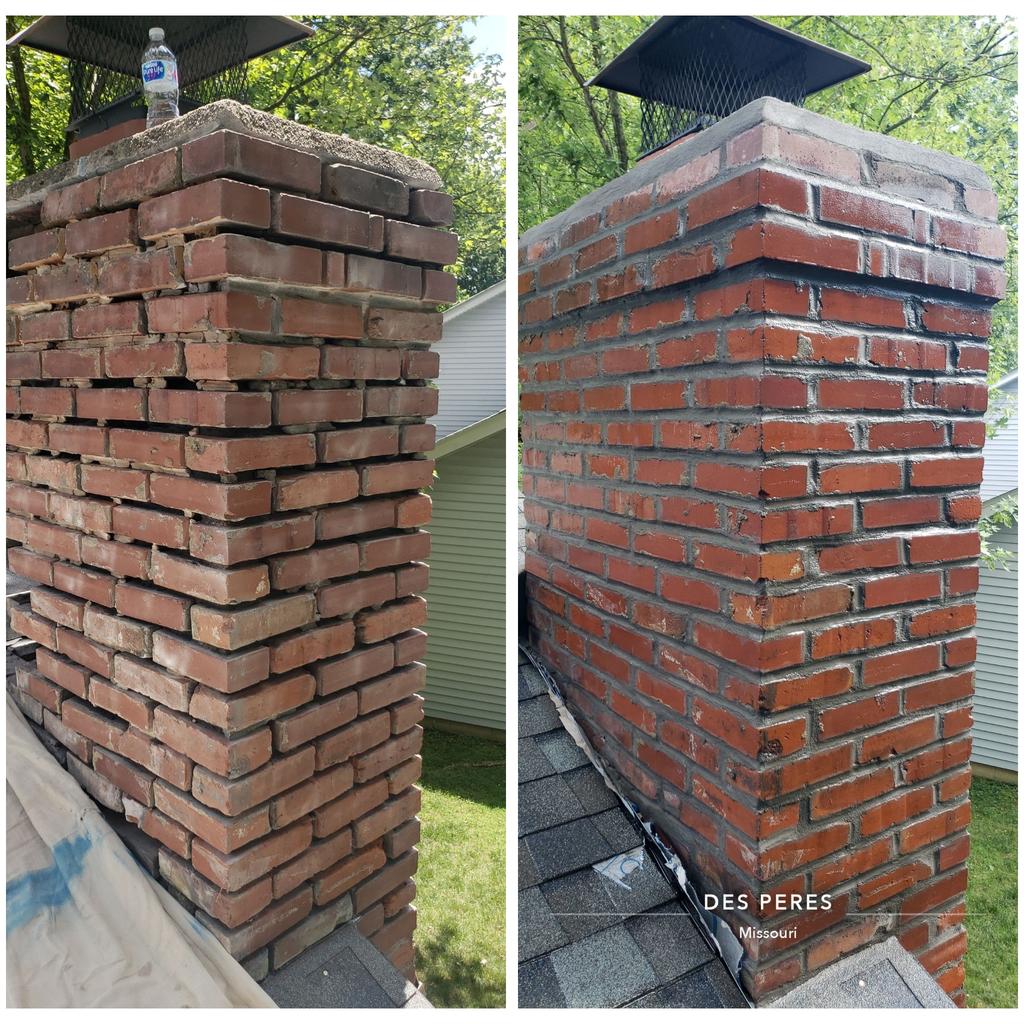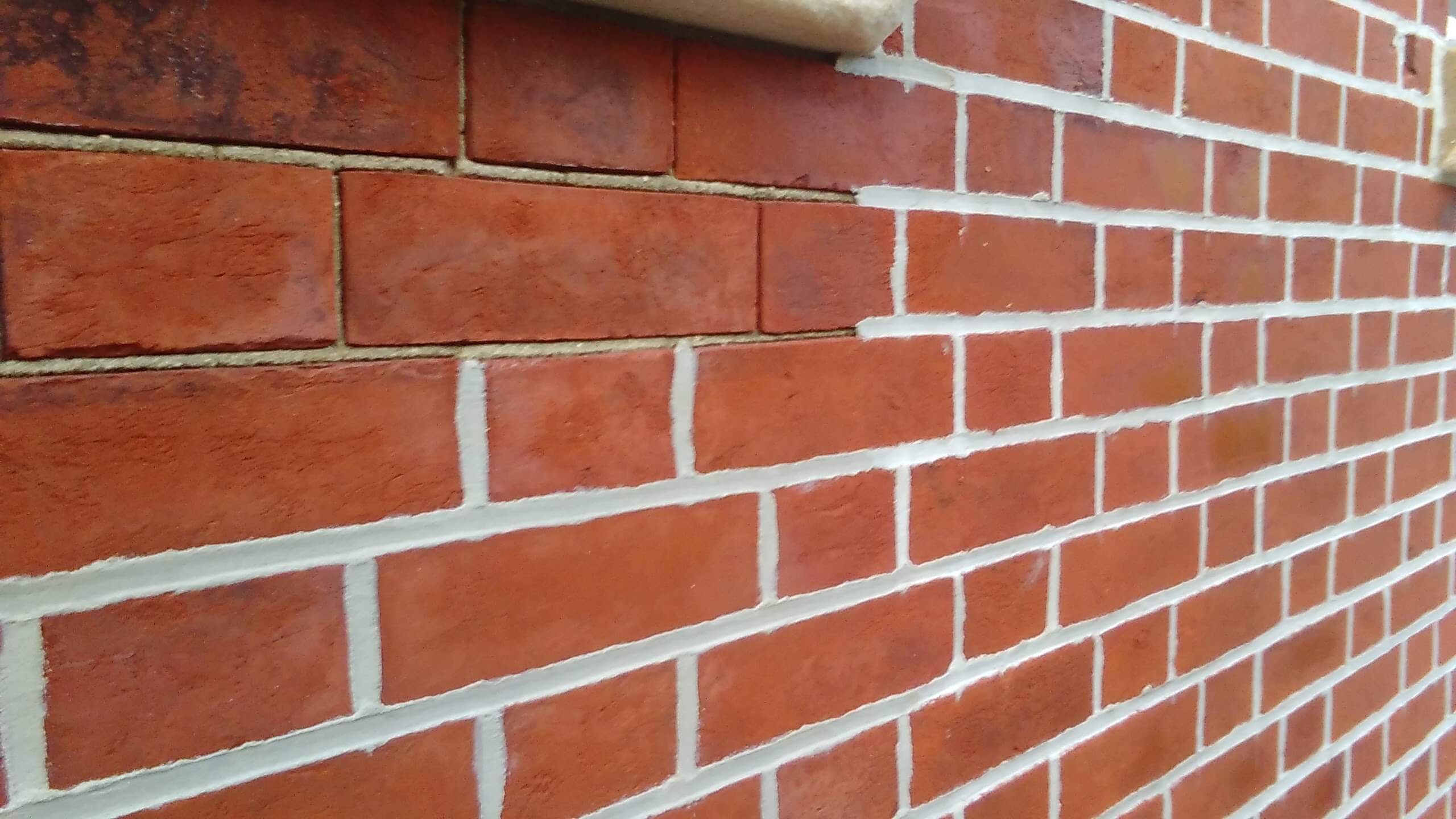Raul's Tuckpointing St. Louis MO: Changing Buildings via Precision Stonework Remediation
Wiki Article
Achieve Impeccable Brickwork Remediation With Top-Quality Tuckpointing
When it concerns restoring brickwork, accomplishing flawless outcomes calls for a thorough technique and high-quality materials. Tuckpointing, a method that includes fixing and bring back mortar joints, plays an essential role in ensuring the structural stability and aesthetic appeal of brick buildings. In this discussion, we will certainly check out the advantages of tuckpointing, the steps entailed in the process, the importance of experienced craftsmen, and exactly how to select the best products for an effective reconstruction task. In the process, we will additionally give upkeep tips to aid you preserve the durability of your freshly recovered brickwork. So, allow's dive into the globe of tuckpointing and discover just how it can change your brick frameworks.Benefits of Tuckpointing
Over time, the mortar joints in between bricks can weaken due to weathering and age, leaving the blocks vulnerable to damages. Tuckpointing involves removing the worn-out mortar and changing it with fresh mortar, properly recovering the toughness and stability of the brickwork.Another benefit of tuckpointing is its capacity to improve the visual appeal of brickwork. As mortar ages, it can become stained or damaged, diminishing the total look of the blocks. Raul's Tuckpointing St. Louis MO. Tuckpointing enables the removal of undesirable mortar and the application of new mortar that matches the color and structure of the original brickwork, leading to a visually appealing and seamless surface
Moreover, tuckpointing assists to protect against additional damage to brickwork. By changing deteriorated mortar, tuckpointing seals the joints in between blocks, preventing water and dampness from seeping in. This aids to safeguard the bricks from damages triggered by cold and thawing cycles, inevitably prolonging the life of the brickwork.
Actions Entailed in Tuckpointing Refine
To begin the tuckpointing process, cautious prep work and analysis of the brickwork is necessary. This step is critical to ensure that the restoration is done effectively and successfully. The first action involves a detailed exam of the existing mortar joints. Any type of damaged or worn away mortar is meticulously gotten rid of making use of knives or grinders. It is crucial to remove all loosened mortar to develop a steady and tidy base for the brand-new mortar.
After the removal of the damaged mortar, the following step is to prepare the mortar mix. The mix should be thoroughly prepared to match the make-up and color of the existing mortar. This is essential for accomplishing a smooth and aesthetically pleasing coating. The mortar mix must be proportioned thoroughly and combined thoroughly to make sure consistency.
When the mortar is prepared, the tuckpointing process starts. The mortar is pressed strongly into the joint to make certain a safe bond.
After the mortar has been used, excess mortar is carefully gotten rid of using a jointing tool or an aiming trowel. The last action entails smoothing and shaping the mortar to match the surrounding brickwork. This is done utilizing a tuckpointing trowel or a jointing device.
Value of Knowledgeable Craftsmen in Tuckpointing
Knowledgeable craftsmen play a critical role in the tuckpointing process, making certain the reconstruction of brickwork is implemented with precision and proficiency. Tuckpointing is a labor-intensive job that includes removing harmed mortar joints and changing them with new mortar. It requires a high degree of ability and experience to attain the preferred results.One of the essential reasons why skilled artisans are very important in tuckpointing is their ability to examine the condition of the brickwork accurately. They can recognize the extent of the damages and determine the suitable program of activity. This is vital because every block framework is one-of-a-kind, and the remediation procedure need to be tailored to its certain demands.
Furthermore, proficient craftsmen have the expertise to pick the right materials for tuckpointing. They comprehend the various types of mortar and their compatibility with various block types. This understanding makes certain that the new mortar will bond efficiently with her latest blog the existing bricks, offering long-lasting strength and security to the framework.
Additionally, proficient artisans have an eager eye for detail and can implement the tuckpointing procedure with accuracy. They can develop tidy, straight lines and make certain that the mortar is used evenly and at the appropriate deepness. This interest to information boosts the overall appearances of the brickwork and adds to its architectural integrity.
Selecting the Right Materials for Tuckpointing
When selecting materials for tuckpointing, it is critical to consider their compatibility with the details block type and the desired end result of the reconstruction process. The products utilized in tuckpointing play a vital function in accomplishing impressive brickwork remediation. The two main products associated with tuckpointing are mortar and the colored mortar made use of for the attractive part.To start with, the mortar must be suitable with the kind of block being brought back. It is essential to take into consideration elements such as the porosity and toughness of the bricks. Various brick kinds have varying residential or commercial properties, click over here now and utilizing the wrong mortar can cause inadequate adhesion and potential damages to the bricks. As a result, it is necessary to seek advice from experts or perform appropriate research study to establish the proper mortar for the specific brickwork.
Secondly, the tinted mortar made use of for the decorative component ought to be thoroughly picked. The shade must match the original mortar as closely as possible to maintain the visual allure of the brickwork. Additionally, the tinted mortar ought to be immune and sturdy to weathering, making sure that the recovered brickwork remains intact and visually appealing for an extended period.

Upkeep Tips for Resilient Brickwork Restoration
Correct upkeep is essential for guaranteeing the long life of brickwork reconstruction. After investing effort and time into recovering your brickwork, it is vital to take proactive steps to maintain its beauty and architectural integrity. Here are some upkeep tips to aid you accomplish resilient outcomes.Normal cleansing is fundamental to preserving brickwork. Use a soft brush or a pressure washing machine on a low setting to eliminate dust, crud, and moss that might build up with time. Prevent utilizing extreme chemicals that can harm the bricks or mortar.
Look for splits, loosened blocks, or wearing away mortar. Repointing, or applying brand-new mortar in between the bricks, might be required to maintain the strength and stability of the brickwork.
Safeguard your brickwork from water damage by guaranteeing proper drainage. Install gutters and downspouts to divert water away from the brickwork, protecting against wetness accumulation and prospective deterioration. Additionally, consider applying a water-repellent sealer to further you could look here protect the bricks from wetness penetration.
Stay clear of putting hefty items against the brickwork, as this can trigger stress and anxiety and possibly lead to breaking or displacement. Regularly trim close-by trees or plants to avoid origins from turning into the brickwork, which can create damages gradually.
Conclusion

Tuckpointing entails removing the deteriorated mortar and replacing it with fresh mortar, properly restoring the strength and stability of the brickwork.
Tuckpointing permits for the removal of unattractive mortar and the application of brand-new mortar that matches the shade and structure of the initial brickwork, resulting in a aesthetically enticing and seamless finish.
After the removal of the damaged mortar, the next action is to prepare the mortar mix. Tuckpointing is a labor-intensive task that involves getting rid of harmed mortar joints and replacing them with new mortar. The 2 primary products included in tuckpointing are mortar and the tinted mortar used for the ornamental part.
Report this wiki page